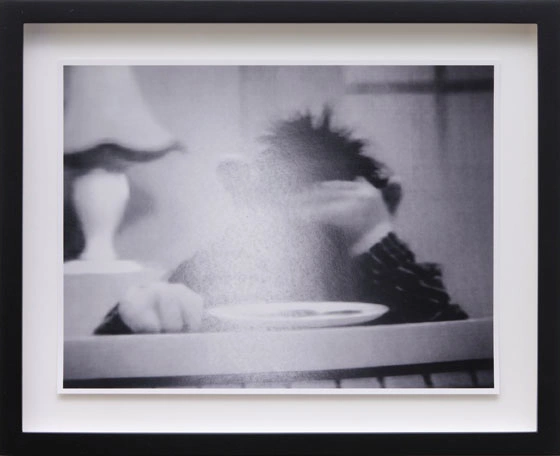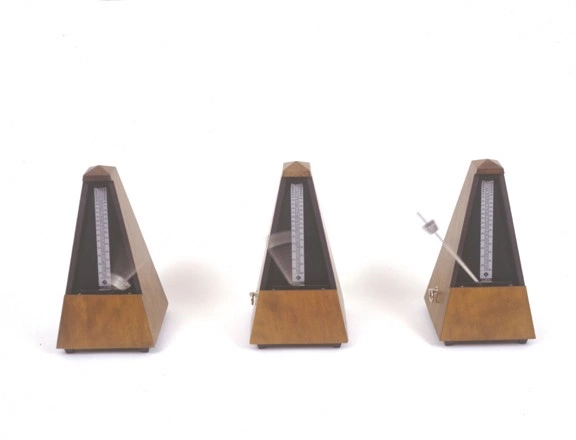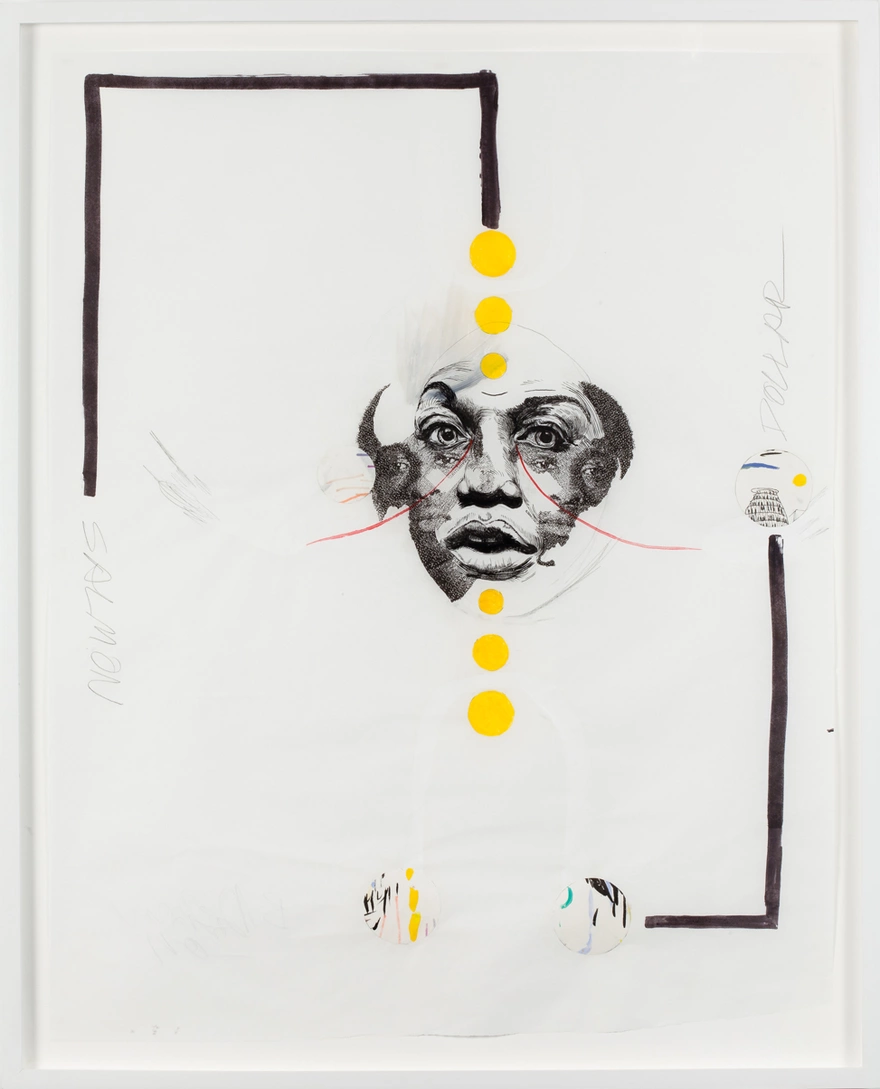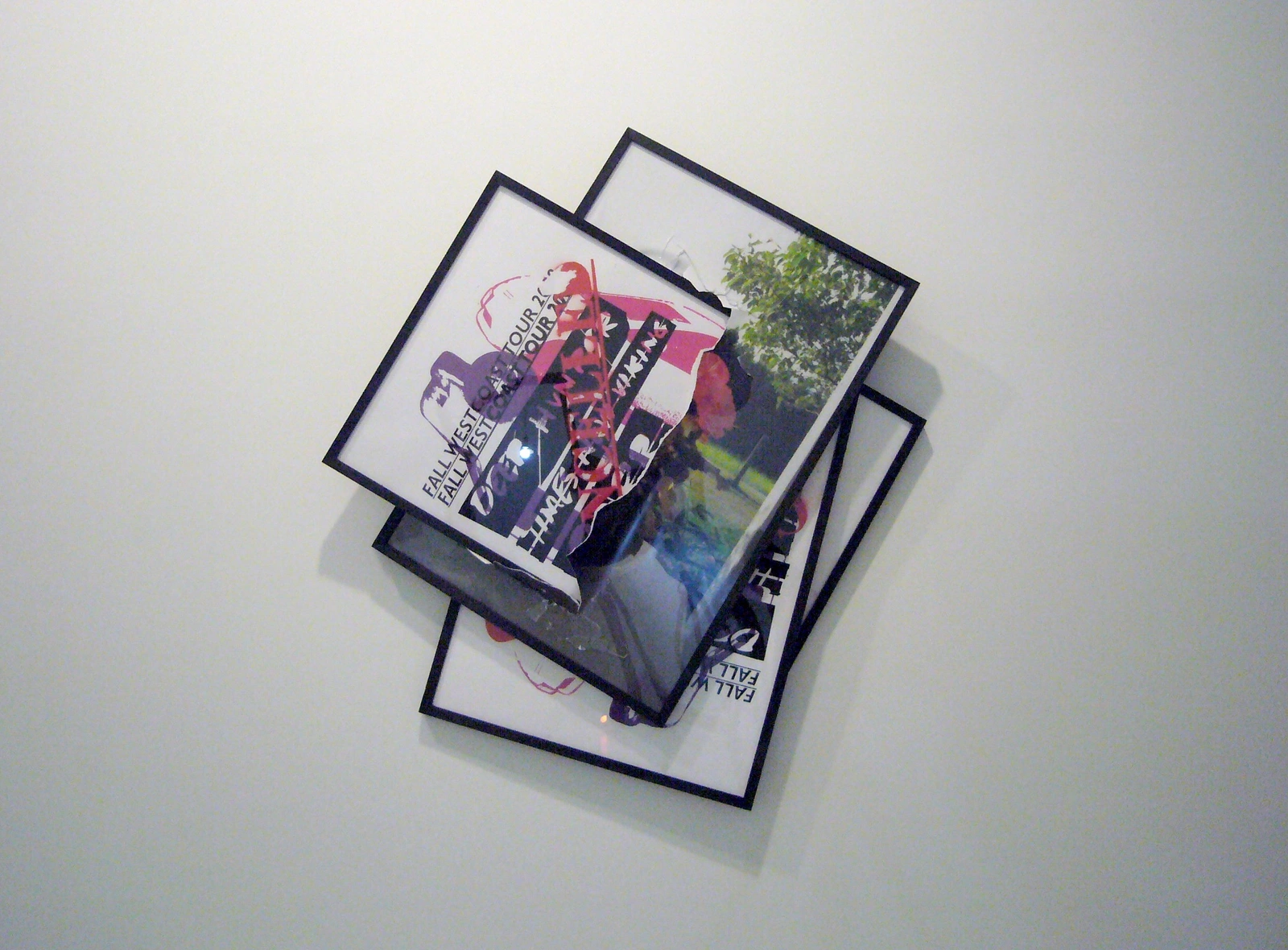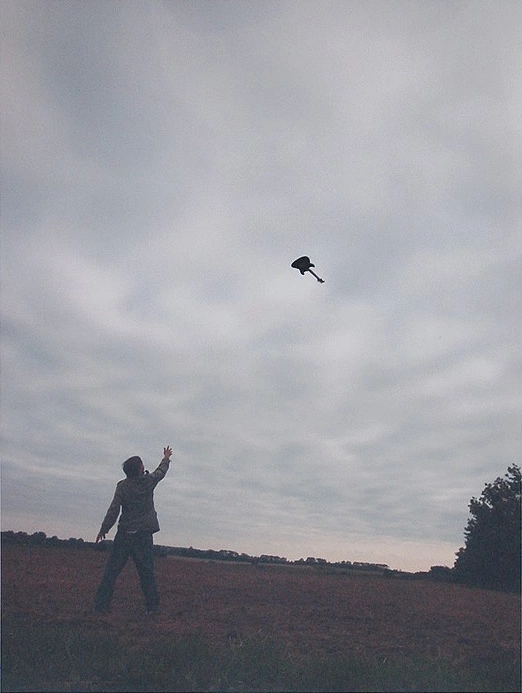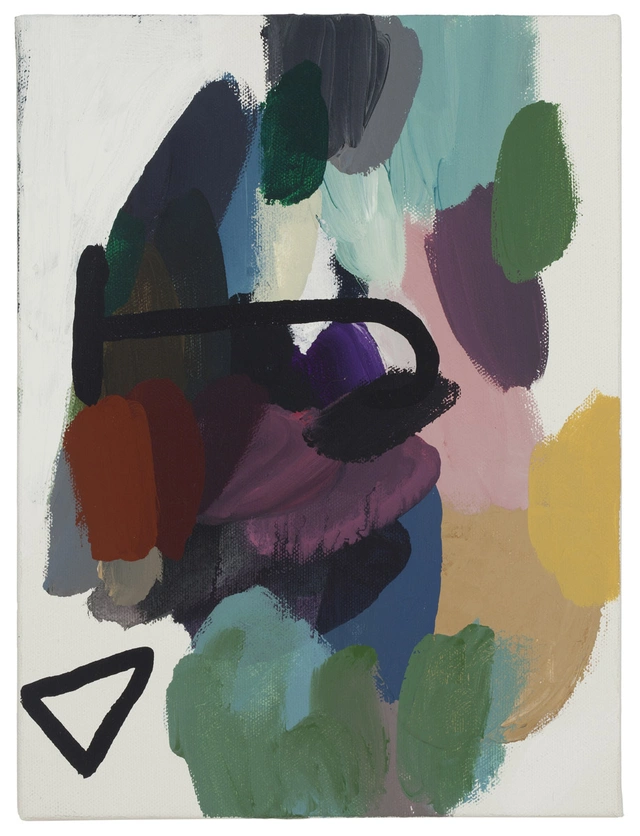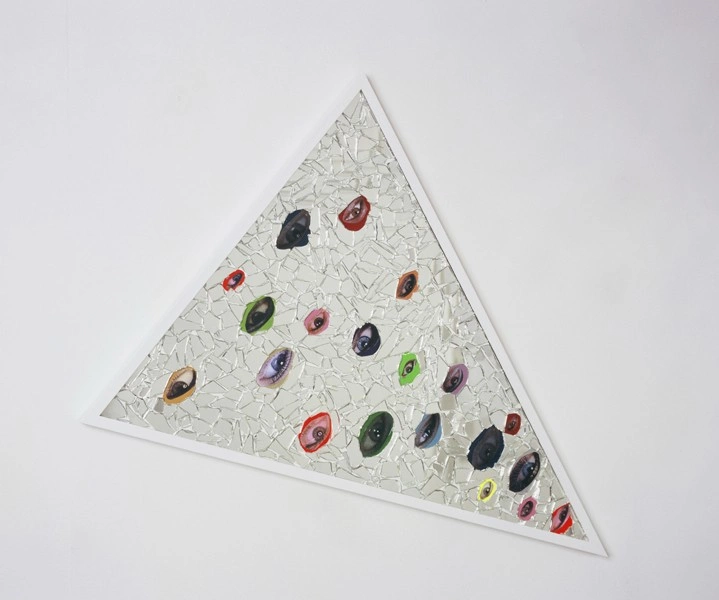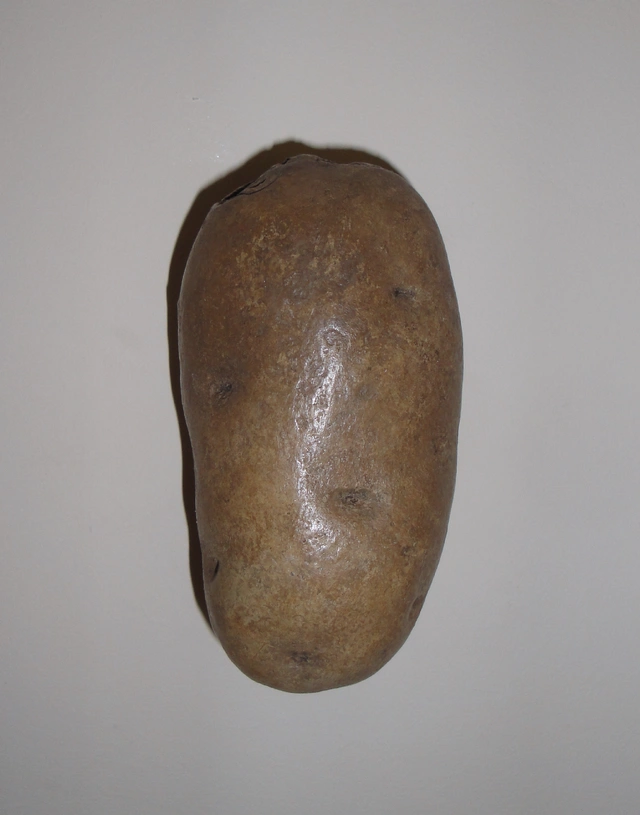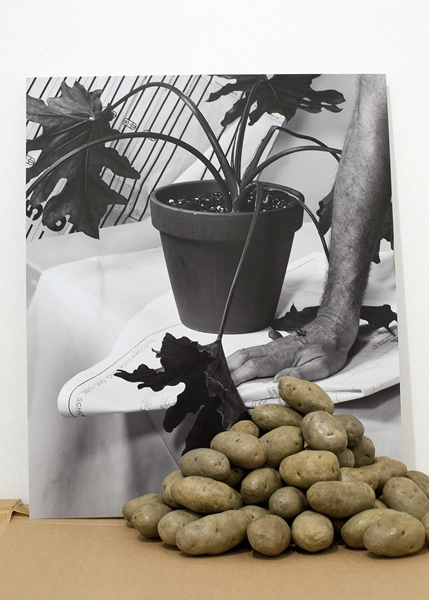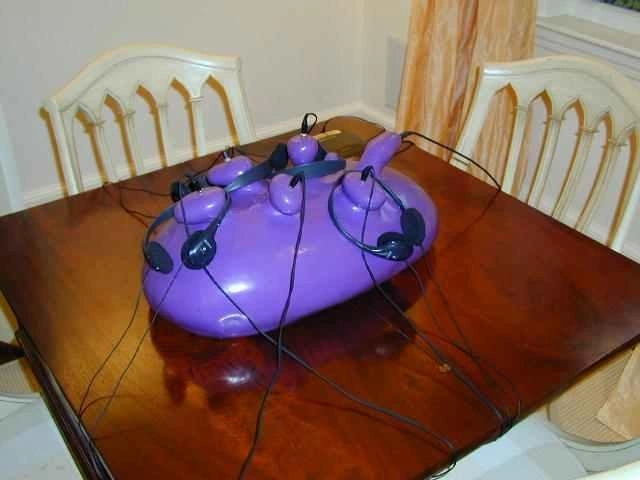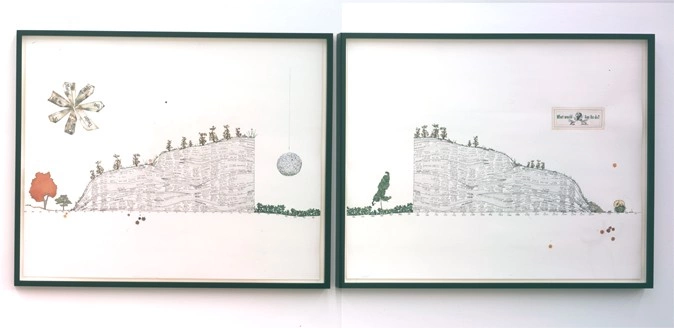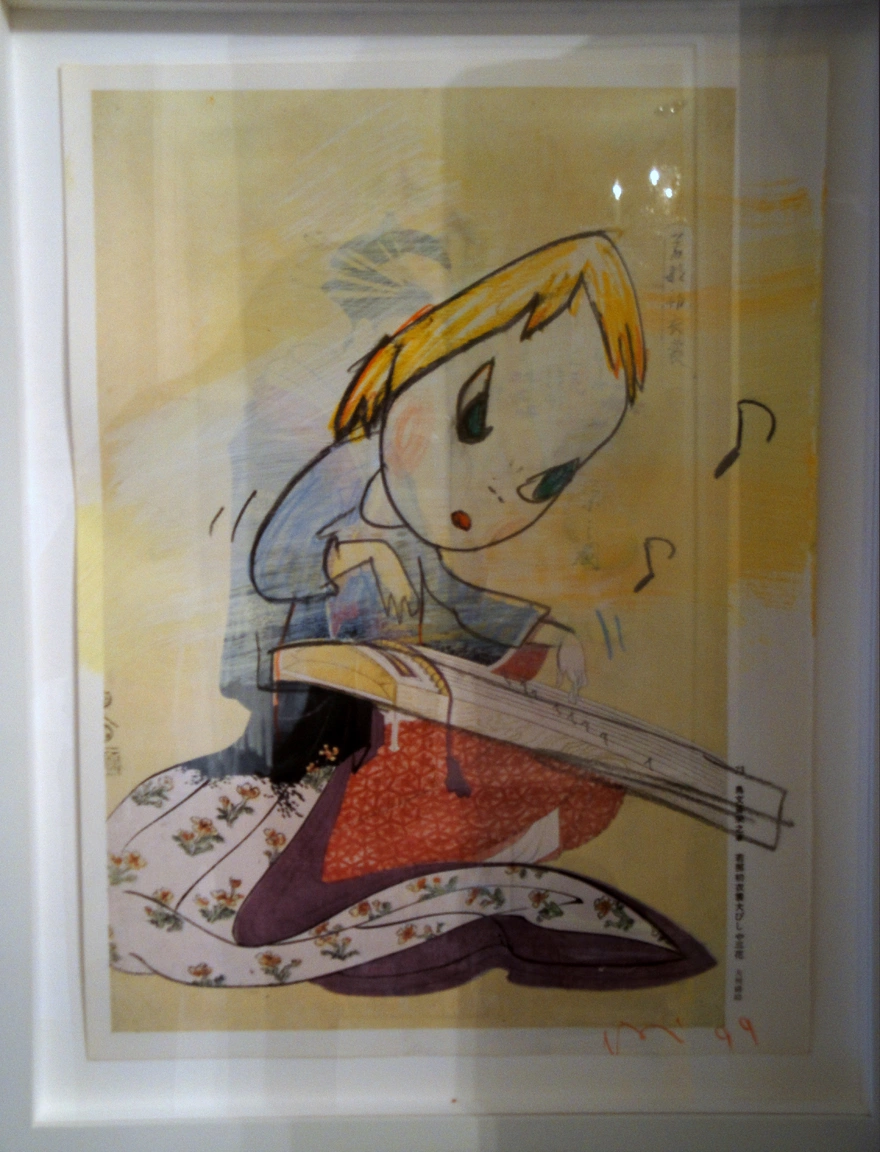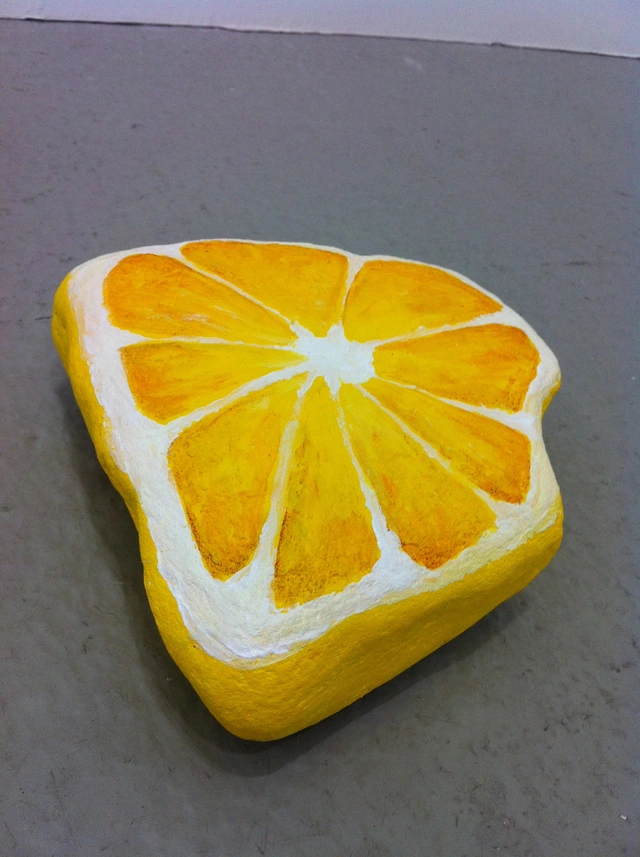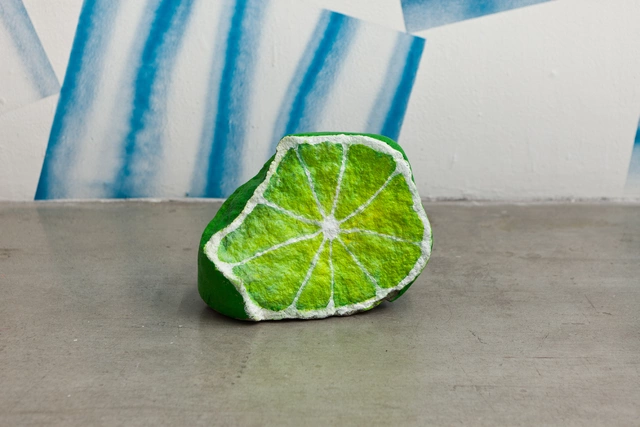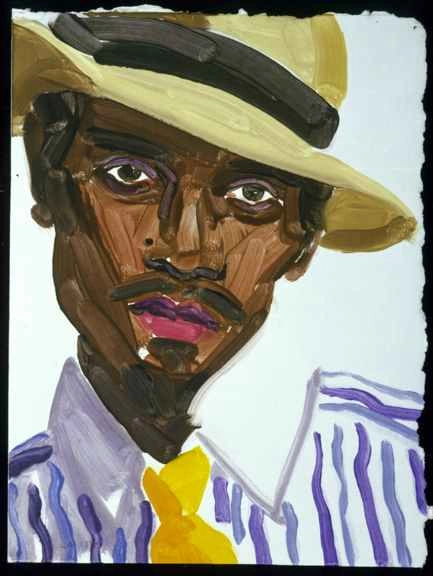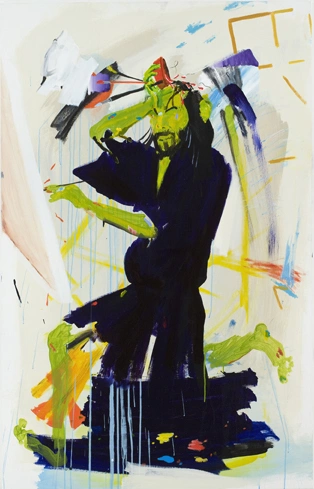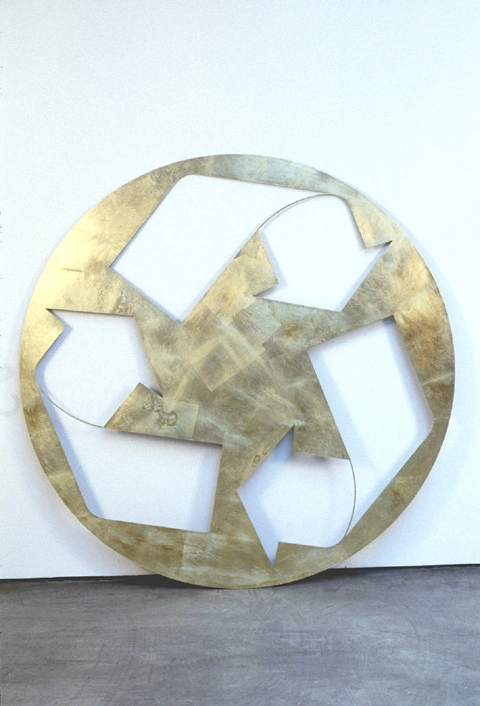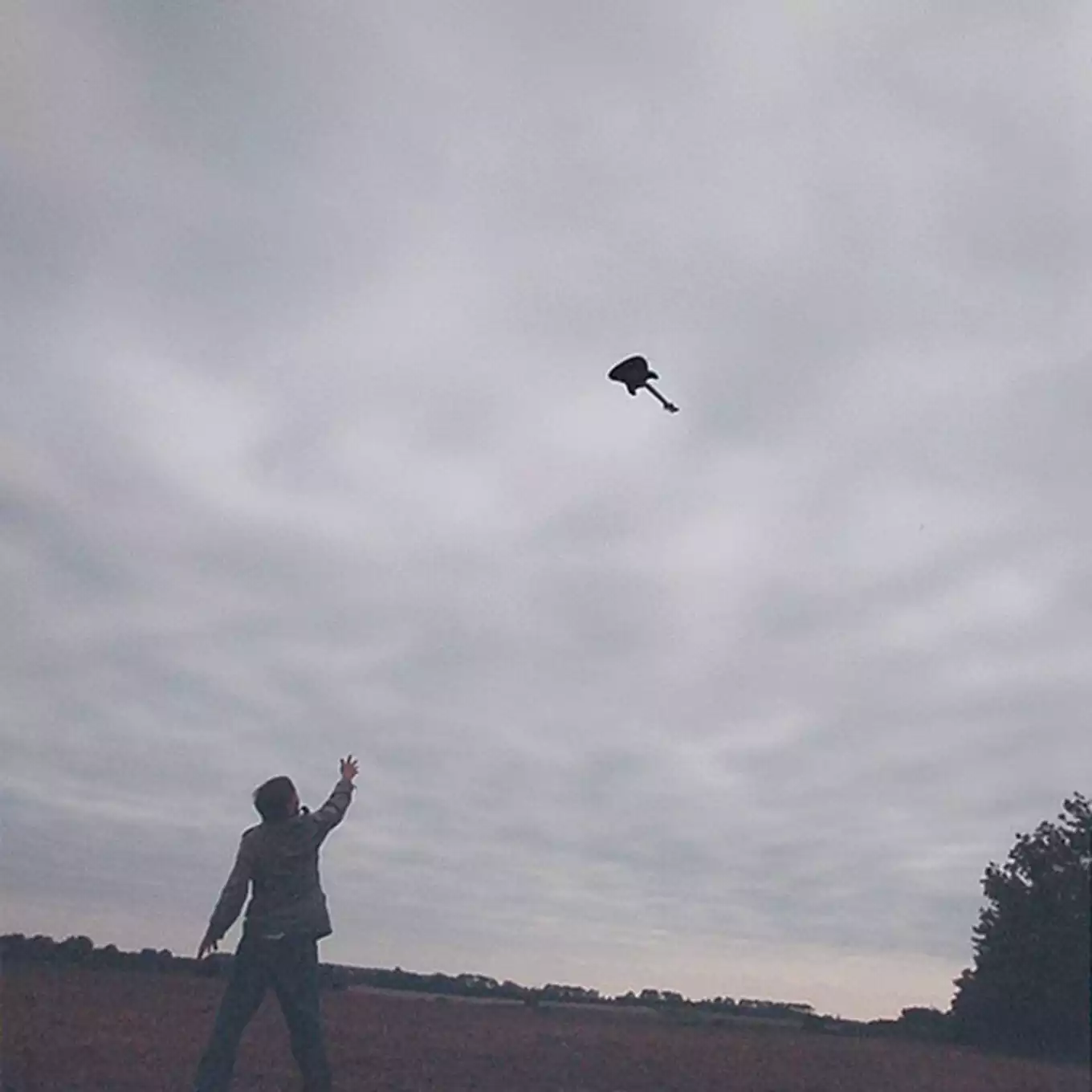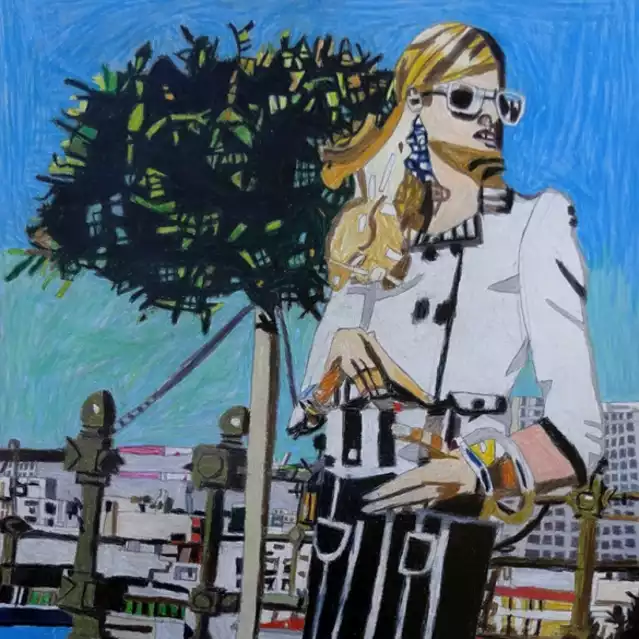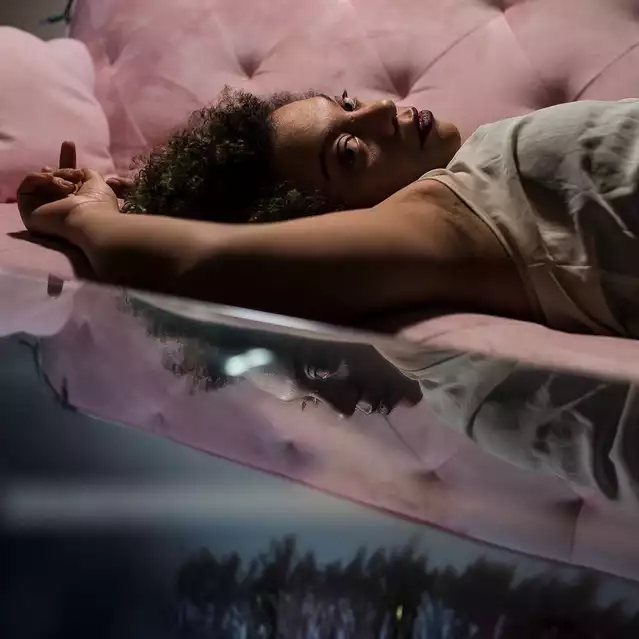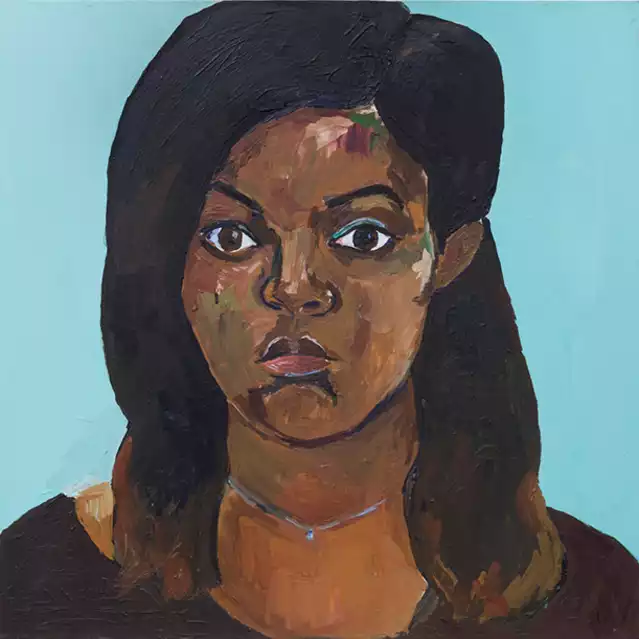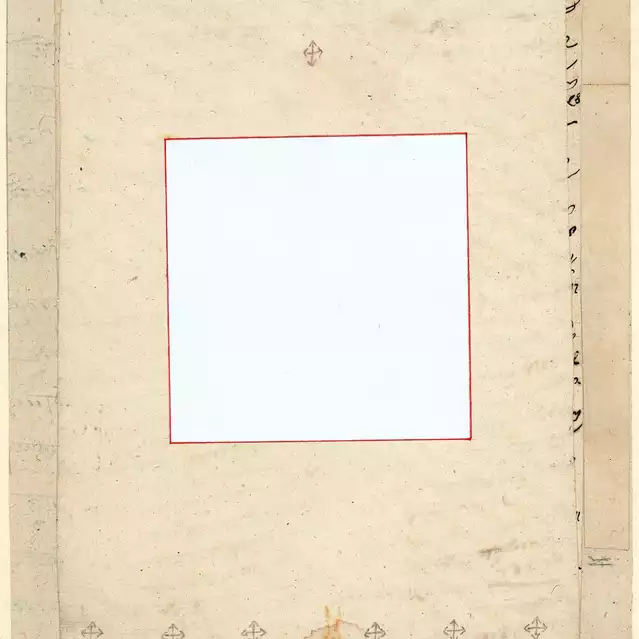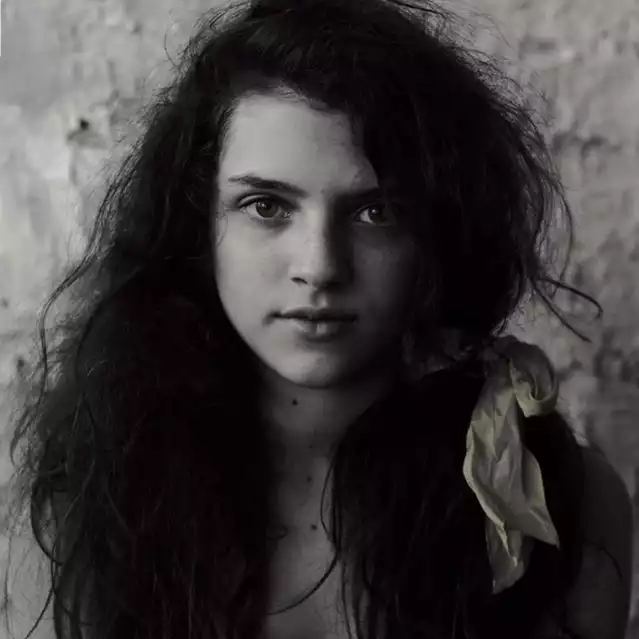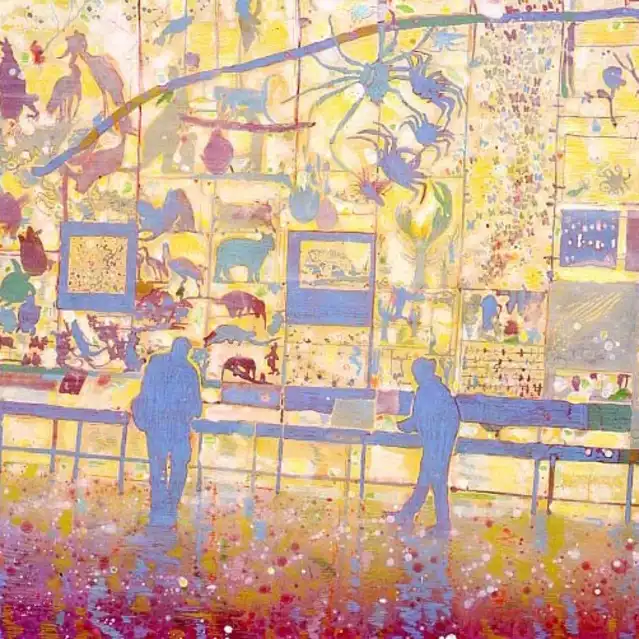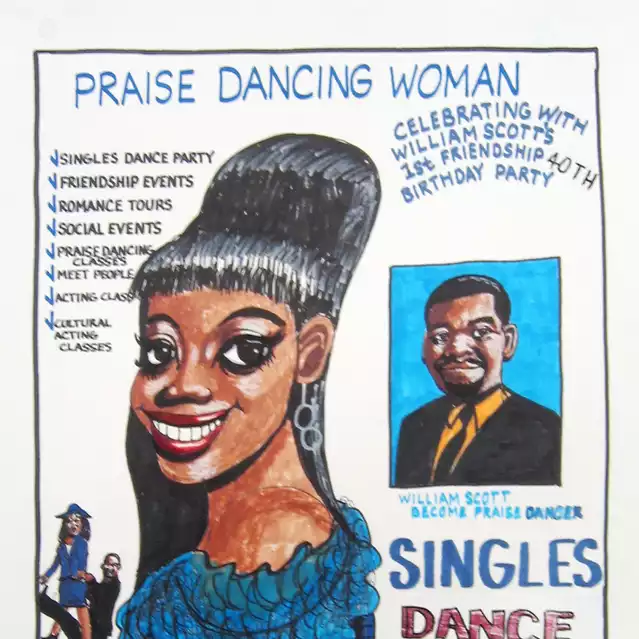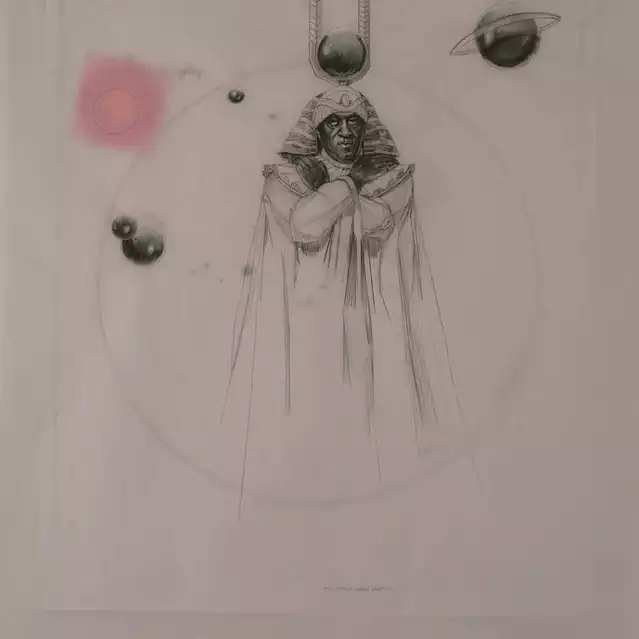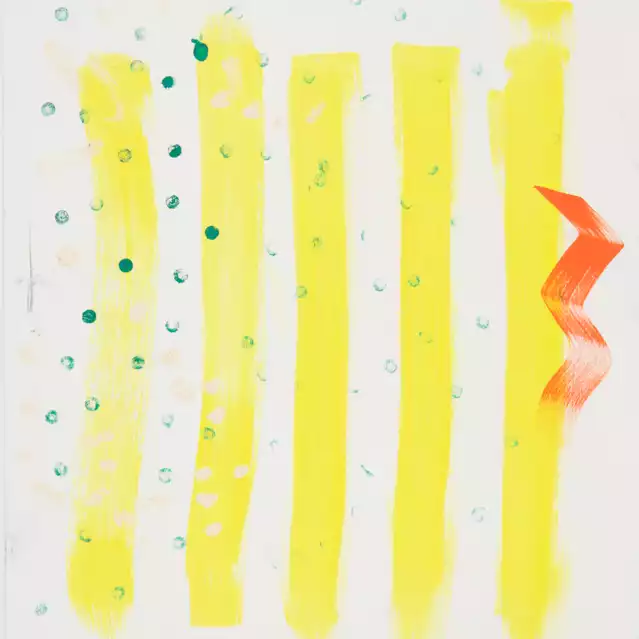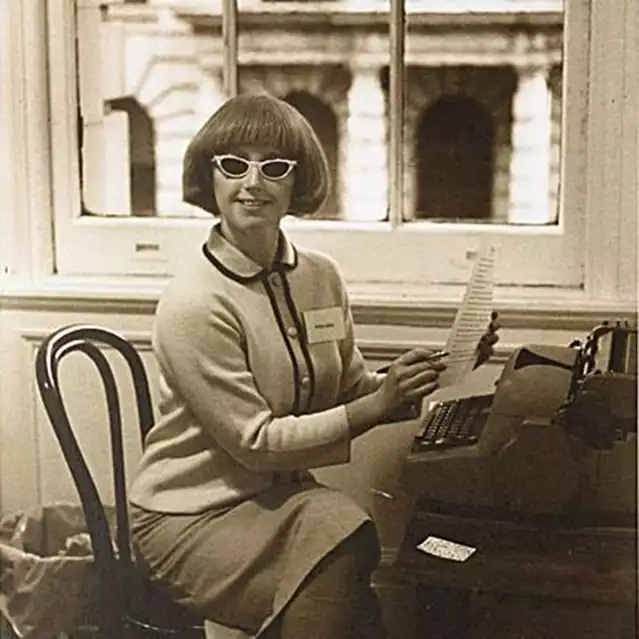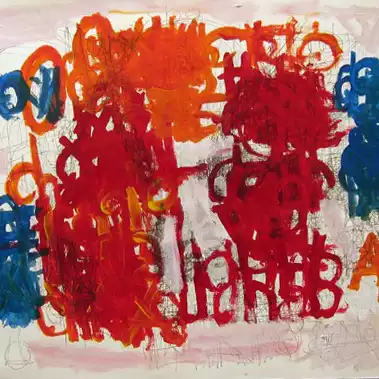Text from curator Kelly Taxter
Night was dark, but the sky was blue,
Down the alley, the ice wagon flew,
Heard a bump, and somebody screamed,
You should’ve heard just what I seen.
You Should’ve Heard Just What I Seen borrows its title from Bo Diddley’s 1956 classic “Who do You Love?” It’s a song about Hoodoo, a folk magic born of the mingling of African traditions with some Native and Latin American customs. Songs, dances, talismans, potions, and idols are the Hoodoo practitioner’s tools. With these, he becomes a conduit to the spirit world, summoning heavenly powers to realize goals, healing, or revenge. One wonders what the incantation of Diddley’s verse called upon, riddled as it is with darkly poetic allusions to disenfranchisement, desire, transformation and freedom. The song recounts a hyperbolic tale, wherein a mysterious protagonist witnesses what “went bump in the night.”
This capacity to glimpse that which is otherwise hidden,an extra-sensory ability to see, hear, or feel what lies beneath, above, and in between, also speaks to the role of the artist. The images and objects the artist makes show how he or she sees the world and in turn guide people and cultures towards a deeper understanding of themselves.The artist’s tools are varied: pen, paper, paint, canvas, clay, bronze, camera. Less obvious is what drives the creative process. Music, the focus of this exhibition, is an experiential art form, a means to get outside oneself, to move beyond reason towards intuition, free association, and pure emotion. Music straddles many divides: the universal and personal, the group and individual, the exuberant and dejected. Its inherent contradictions and extremes mirror life itself: ever-changing, yet cyclical. Directly or indirectly, on the surface or buried in the content, the influence, history, liveliness, and collaborative and improvisatory nature of music binds these artworks together. You Should’ve Heard Just What I Seen explores the role music plays in the creative process, how it informs and inspires production, and acts as a conduit between thought and form.
Martin Creed, Brian DeGraw, Brendan Fowler, Andrew Kuo, Jim Lambie, and Margaret Lee are all musicians as well as visual artists, while Uri Aran, Charles Long, Nicolas Party, and Spencer Sweeney bring musicians together with their artwork. Friedrich Kunath, Yoshitomo Nara, and Elizabeth Peyton fuse musical influences with their imagery, while Dave Muller and Kelley Walker address the history and economy of musical genres and forms.
Andrew Kuo’s Self Portrait (Slice) (2012) derives from the canvas on which he daubs his paintbrush while making other works. The artist suggests his profile by loosely painting a pair of black eyeglasses and a slice of pizza atop the amalgamated blobs. Spencer Sweeney shows himself at work in Self-Portrait in Green (2009– 10). Lost in an allegorical mess of creation, he nearly falls off his stool as paint falls on his head. When not in the studio, Sweeney masterminds the club Santo’s Party House, where he hosts a weekly night of music, DJs, and performance called Spencer’s GIFS, and where Andrew Kuo’s band Hex Message and Brian DeGraw’s band Gang Gang Dance have played. DeGraw’s work on paper, Untitled (Nina Simone + Taliban Trim) (2011), facially morphs the iconic jazz chanteuse with the young UK-based MC. The artist draws together two historically distant musical innovators, willing them to share contemporaneous space and time, and suggesting their respective influences on his art and music. Pizza Slice (2005), by Jim Lambie, also pays homage to the convenient staple. Installation instructions on the back of the artwork indicate it is slice six, and thus it hangs at an angle, in accordance with its placement in a traditional pie of eight slices.The shattered glass and constellation of eyes that comprise the piece have the mystical, collaborative, and somehow comical tone that is a hallmark of Lambie’s work, which always walks the line between gravitas and levity. His exhibitions and artworks are often titled after bands, songs, or albums, pointing to his artistic roots in the Glaswegian music scene, where he was an early member of Teenage Fanclub and roommate to a member of Primal Scream. Brendan Fowler chose to cancel his band BARR’s tour to focus on making artwork for a solo exhibition. That decision spurned the series that includes Fall West Coast 2008 Tour Poster CANCELLED (2 + Flower) (2009). Fowler’s practice hinges on his ability to move between and among artistic genres, each one informing the other, as he puzzles through the best form for his ideas. In the case of this work, the cancellation posters violently collide with flower photographs. Art, music, and life all crash together in one messy, wall-mounted heap.
Nicolas Party’s sculptures of painted rocks, Blakam’s Stone (Lemon) and (Lime) (both 2012), were previously parts of an elaborately composed stage design. The artist’s sculptures, paintings, and drawings are both artworks and props, on and around which musicians perform. The static objects are placed in dialogue with dynamic bodies and sounds, uniting to create an altogether new work of art by virtue of the mise en scène. Uri Aran similarly brings music and performance together in his video works, a practice loosely referred to in his Untitled (2012) photograph of the Sesame Street character, Ernie. Aran, often employs simple childhood songs and games in his work. He implies that the fun and repetition of music and play helps in adapting and adopting cultural norms; however, he also hints at the frustration and exhaustion that learning curve may cause, showing unflappable Ernie seemingly in despair.
Changing our Mind (1995), by Charles Long, deploys sculpture in service of a band—or one could argue that Long deploys the band Stereolab in service of his sculpture. The headphones extruding from the purple “blob” emit the band’s music from within. Stereolab, artist, sculpture, and listeners collaboratively elicit a participatory experience, during which heterogeneous types of expression and interpretation meld into a single experience. Martin Creed is a musician and composer, a player and conductor. His simple songs and sculptures of basic musical tools—like Work No. 223, of three metronomes beating three different rhythms— carry the weight of poetry, albeit to a vaguely antagonistic effect. Creed’s deceptively simple works suggest they are born of struggle; that art, like life, is complex, confusing, disappointing, and rewarding.
Margaret Lee’s photograph Untitled (Michele Abeles) (2010), hung together with Potato (2008–10), derives from direct collaborative exhibition with Abeles, the parenthetical artist. Lee gave the cast- plaster potatoes to Abeles, with the instruction to use it in an artwork of her own. In turn, Lee appropriates an Abeles photograph, shown here, for her own use outside of the exhibition.These works are part discrete, collaborative, and re-mixed artworks, created not unlike music composed by sampling, cut and paste, and file sharing. Kelley Walker’s Untitled (Recycle Sign) (2003) is an over-sized gold medallion of the iconic “reduce, reuse, recycle” icon, calling to mind the“bling”of hip-hop street style as well as the methods by which rap music is composed. Like Margaret Lee’s process in making her photograph, Walker references sampling in his work and, more importantly, the central position that sampling and appropriation holds in his practice. Walker’s paintings, sculptures, and installations are often built upon other artist’s images, whether those of his frequent collaborator Wade Guyton or blatantly lifted from Andy Warhol.
Dave Muller’s This is a Rise and Fall (2005) appropriates and retools Reebee Garofalo’s chart, first made in 1977 and titled “The Genealogy of Pop/Rock Music,” as mountains in a vast landscape. Muller, a life-long, avid record collector and music enthusiast, often approximates music and life, records and people. He constitutes a portrait by asking his “sitter” for their top ten albums, which he then paints in profile, the text of their spines standing in for personality, state of mind, or over-arching sense of character. Elizabeth Peyton is best known as a portraitist, taking friends and celebrities as subjects and subtly but deftly rendering them softened, historicized, and detached from themselves. Her print Andre Hat (2004) is a portrait of the dapper Outkast singer Andre 3000. Andre is a fitting subject for an artist so agile at collapsing historical time, the everyday and celebrity, as his music collapsed the wall between hip-hop and rock, synthesizing the disparate genres and creating the hybridized musical style that now dominates pop music.
Yoshitomo Nara’s Untitled (1999) work on paper of a young girl pounding away at an autoharp is typical within the artist’s repertoire of drawings, paintings, and sculptures of cartoonish, rebellious little kids. Their world is seemingly devoid of adult authority and their activities indicate they’ve been let loose in the big world to play, create, and find trouble. Like Dave Muller, Nara is a devoted music fan, and its influence can be witnessed throughout many artworks over many years, in the images themselves or in the titles.
The power of music to shape and transform is perhaps most romantically delivered by German artist Friedrich Kunath’s photograph Untitled (guitar) (2005) of the artist launching an electric guitar into the air, only to inevitably allow it to fall to the ground and be destroyed. Kunath splices the most rebellious of rock tropes, smashing your guitar, onto the most iconic of German art historical traditions, most famously attributed to the romantic painter Caspar David Friedrich. The lone individual, diminished by the vastness of his surroundings—the night sky full of darkening clouds— reconstitutes his power through destruction. Most importantly, Kunath’s photograph symbolizes freedom.
